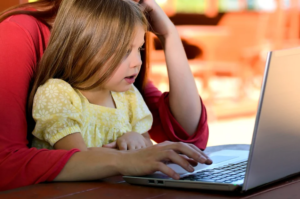
Delivering online lessons for children from COVID-19 disasters has emerged as the alternative for schools looking to resume classes in the face of the need to continue social distancing before a pandemic vaccine is found. Providing an online course like the Shaw Academy courses during covid is helping educational associations worldwide prepare for the shutdown and continue with the academic calendar. While many have expressed alarm about the potential dangers of Internet exposure for young children, others say they fear this digital transformation could alienate economically disadvantaged students who do not have access to the technology needed to take classes digitally.
The Impact of the Pandemic on School
 Because of the vulnerability of the internet, children are at increased risk for online sexual abuse as predators appear to be taking advantage of the COVID pandemic. Online grooming is a problematic phenomenon of the Internet and social media age, with predatory adults making online connections with gullible children and enticing or pressuring them to engage in sexual acts. It is time for us to adapt to the current situation and help our children navigate this new reality.
Because of the vulnerability of the internet, children are at increased risk for online sexual abuse as predators appear to be taking advantage of the COVID pandemic. Online grooming is a problematic phenomenon of the Internet and social media age, with predatory adults making online connections with gullible children and enticing or pressuring them to engage in sexual acts. It is time for us to adapt to the current situation and help our children navigate this new reality.
Challenges of Online Course
Students living in miniature cities struggle with adequate online connection speeds and are mostly can’t attend classes online. This truth could be a disadvantage, especially during exam time, as half of the students are likely to fail because they are unable to attend due to poor online connection. Many of these students don’t have the tools, laptops, smartphones, or money to maintain a relationship with the internet while paying tuition at the same time. These are the real challenges that disrupt the online learning process.
Not only students but also some teachers and educators struggle to learn how to use technology. Schools want them to make PowerPoint (PPT) presentations, post-movie assignments, and choose online lessons through various apps and online platforms, but they are not clearly instructed on how to do so. This happens more often than adults 60 and older, who find the medium of online education delivery very difficult because they lack hands-on experience with the latest technologies. The lack of interaction between students and teachers in the real world is another challenging element that can negatively affect connections between them, unlike in regular classrooms.
A New Reality
Security issues with video conferencing applications like Zoom came to light in the early days of the lockout related to conducting classes, meetings, and individual appointments online. Many schools began looking for alternatives to keep the 2020-21 academic year moving rather than endure significant disruptions due to the coronavirus pandemic. COVID-19 has developed an unprecedented reliance on technology to support work practices in various industries and its potential long-term impact on the marketplace and lifestyles of people around the world. Studies are conducted on the growing dependence on gadgets among adults and children to monitor their influence on emotional well-being.
Now, it’s even more critical to offer protection services to children to ensure they stay open and active throughout the ordeal, making sure the device they use has the latest antivirus software and applications to take measures against cyber-attacks and risks. Also, UNESCO has suggested that the use of broadcasting is more likely to reduce current disparities among students who want to continue their education with online courses.
Additional Information
We now feel the stress and reduction; for ourselves, our children, our community, and our world. It is common for the adolescent to feel anger, sadness, and fear of their own possible. So we must develop each other and care for our teens during this time. We can explore new interests, bond with family, and make new kinds of memories together.

